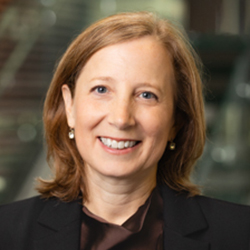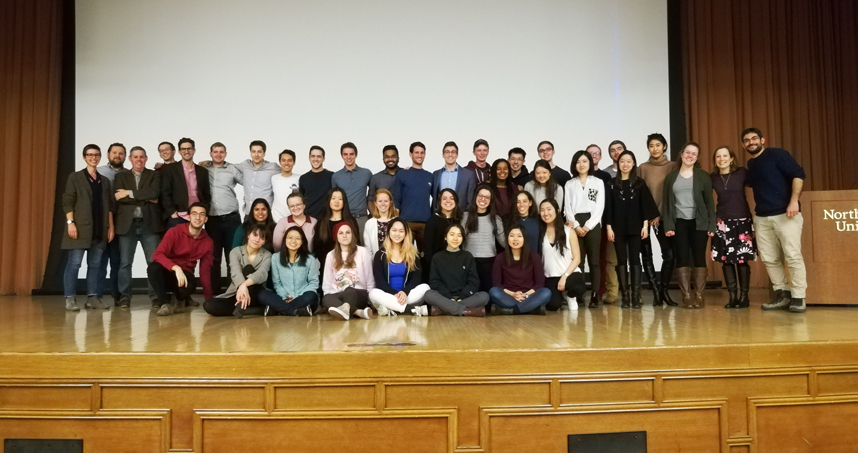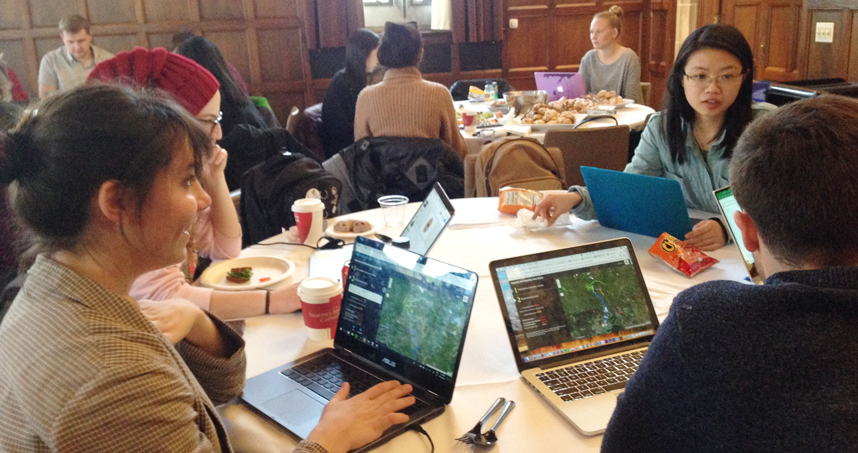Hacking to Help Red Cross Relief Efforts
Class analyzes data, works with Red Cross to improve humanitarian efforts in Puerto Rico
Six months after Hurricane Maria devastated Puerto Rico, students in a Northwestern Engineering class developed solutions to help the American Red Cross optimize relief efforts.
During a 48-hour hackathon, interdisciplinary student teams in McCormick’s IEMS 365: Analytics for Social Good course developed hands-on solutions using data analytics to aid humanitarian efforts in a natural disaster.
“We worked hard, but this was not about getting a good grade,” said Julie Malewicz, a junior physics major. “It was about inventing in something that had value.”
 The open-ended assignment — to help the Red Cross develop new and better ways of handling their response to hurricanes — served as the final project for the class, which was open to 40 juniors and seniors from any major across Northwestern.
The open-ended assignment — to help the Red Cross develop new and better ways of handling their response to hurricanes — served as the final project for the class, which was open to 40 juniors and seniors from any major across Northwestern.
“With Hurricane Maria hitting relatively recently, these are problems that have not been fully considered,” said Aaron Kaplan, a junior computer engineering major.
The class, taught by Professor Karen Smilowitz, exposes students to the challenges and opportunities of applying data analytics to achieve social good. In addition, the students, working in teams of five from different academic backgrounds, learn to respect and play off of each other’s strengths.
For the final assignment, students received briefings from American Red Cross officials from Chicago and on the ground in Puerto Rico. They also had access to recent data on food access, water, and electricity from 907 barrios in the region.
After receiving their challenge, the teams spent the next two days brainstorming ideas, iterating possible solutions, and crafting a final presentation.
The groups’ solutions varied widely — from developing a severity index to using drones to collect information about blocked roads and access to electricity.
First offered in 2015, Analytics for Social Good combines weekly lectures, guest speakers visits, and team-based interactive case-studies. Three different projects, each lasting three weeks, prepared the teams for the final challenge.
“This is not like other classes where there are clear answers and clean data,” said Smilowitz, Charles Deering McCormick Professor of Teaching Excellence and professior of industrial engineering and management sciences. “Data collected after disasters can be messy. It’s not perfect. How do you deal with inconsistencies? Can you draw on other data sets — like pre-disaster data?”
One goal of the course is to understand the ambiguity of potential pro-social solutions. Students must tackle thorny issues, such as how to distribute resources during a natural disaster in an equitable manner.
“This class is different than most engineering classes in that we talk about race and income disparity,” Smilowitz said. “It takes the students out of their comfort zone — it takes me out of mine too. They have to think more broadly about their solutions.”
That broad thinking was enabled by the diverse group of majors represented.
“It’s cool to watch the students realize that as juniors and seniors, they are experts in their various fields,” Smilowitz said. “A journalism student, for instance, is amazing at asking questions. That made other students’ jaws drop. That was a skill they didn’t have.”
The pressure that students endured during the hackathon underscored the reality and rewards of responding to natural disasters.
“We learned a lot about working in intense circumstances on something that is way bigger than ourselves,” Malewicz said.


